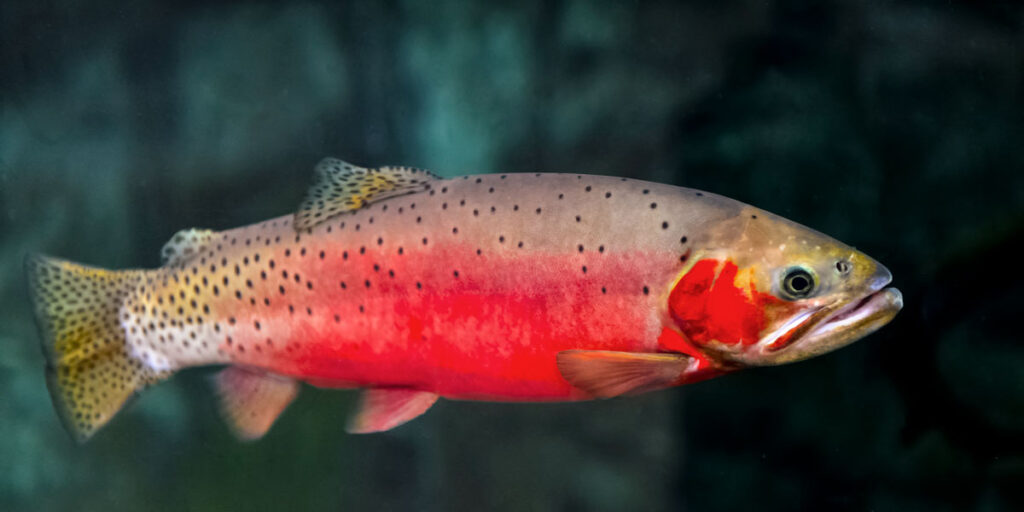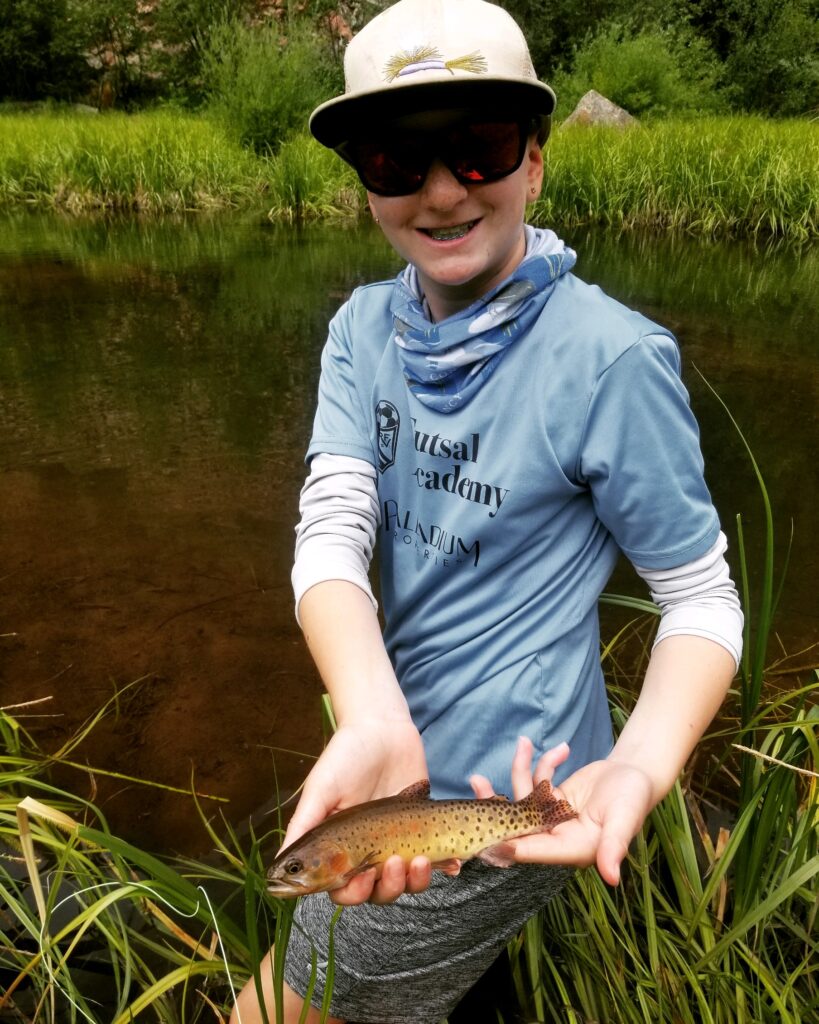
Even if you live in the West and fishing isn’t your passion, it still seems likely you’ve heard of cutthroat trout, swimming throughout the waters of the West. The Colorado River cutthroat trout is one of three subspecies of cutthroat trout and is native only to the Green and Colorado River basins in the Western United States. This small but mighty fish has been an icon of the region for centuries. It is an important source of food for many species of birds, as well as bears and river otters. Fly fishing anglers from all over the states flock to Colorado, Utah, New Mexico and Wyoming to experience the colorful spotted beauties.
A beautiful, distinctive fish that’s a gem to see.
The Colorado River cutthroat trout has been called one of the most beautiful fish in North America—and we agree. Their identifiable markings include a bright yellow-gold body, often with greenish-brown on its back and darker spotting on the sides. The belly is pale and the fins are reddish or orange. The trout also has a reddish stripe under its lower jaw, distinguishing it from other trout species.
The average size of these trout is around 8-10 inches in length, but they can grow up to 18 inches. A trout that size is rare because they mostly live at high altitudes where the growing season is short and much of their habitat has been degraded.
The more habitat these fish can reclaim, the better.
The trout are found mostly in the Green and Colorado River basins. Historically, they inhabited the Colorado River and its tributaries from the headwaters in Colorado and Wyoming down to the Grand Canyon in Arizona. However, the population has declined significantly over the years due to human activity and introduced non-native species.
Today, the remaining populations of the Colorado River cutthroat trout are found in small, isolated streams and lakes in the higher elevations of headwaters. These fish require cold, clear water with high oxygen levels and gravelly or rocky stream bottoms for spawning.
They are another native species, threatened and declining.
The 1800s did not fare well for the Colorado River cutthroat trout. They were overfished and brought to the point of near extinction. Though their population has declined by over 90%, restocking of cutthroat and removal of nonnative species has helped. The trout are now listed as threatened versus endangered. The primary risks include habitat destruction, overfishing, water diversions and withdrawals, and the introduction of more non-native fish species.
Water diversions disrupt the natural flow of rivers and streams, affecting the trout’s ability to spawn and access their habitat. When non-native fish such as brown and rainbow trout were introduced, it opened up a whole new danger, as they prey upon the cutthroat. Climate change, wildfires and droughts also limit and degrade their habitat.
You can help this iconic fish live on.

Efforts to conserve the trout have been ongoing for decades, including the restoration of diverse yet well-connected streams with boulders and large, downed trees that provide cover from predators. Also critical are fish passage projects, the reintroduction of native trout populations, and the removal of brown and rainbow trout from where they don’t naturally live.
Organizations, including the U.S. Fish and Wildlife Service and state fish and wildlife agencies, are working together to protect and restore the Colorado River cutthroat trout and its habitat. These organizations also educate the public about the importance of conservation and responsible angling practices. While the cutthroat faces numerous threats, ongoing conservation efforts offer hope for its long-term survival.
Anglers can do their part by practicing responsible fishing practices, such as catch-and-release and avoiding fishing during spawning periods. Others can volunteer or give to organizations, like Forever Our Rivers, which works hard to restore aquatic and riparian habitat within and along rivers, crucial for the trout’s survival. The more habitat the better, and by working together, we can ensure that future generations will have the opportunity to experience the beauty and majesty of this remarkable, reputable fish.
